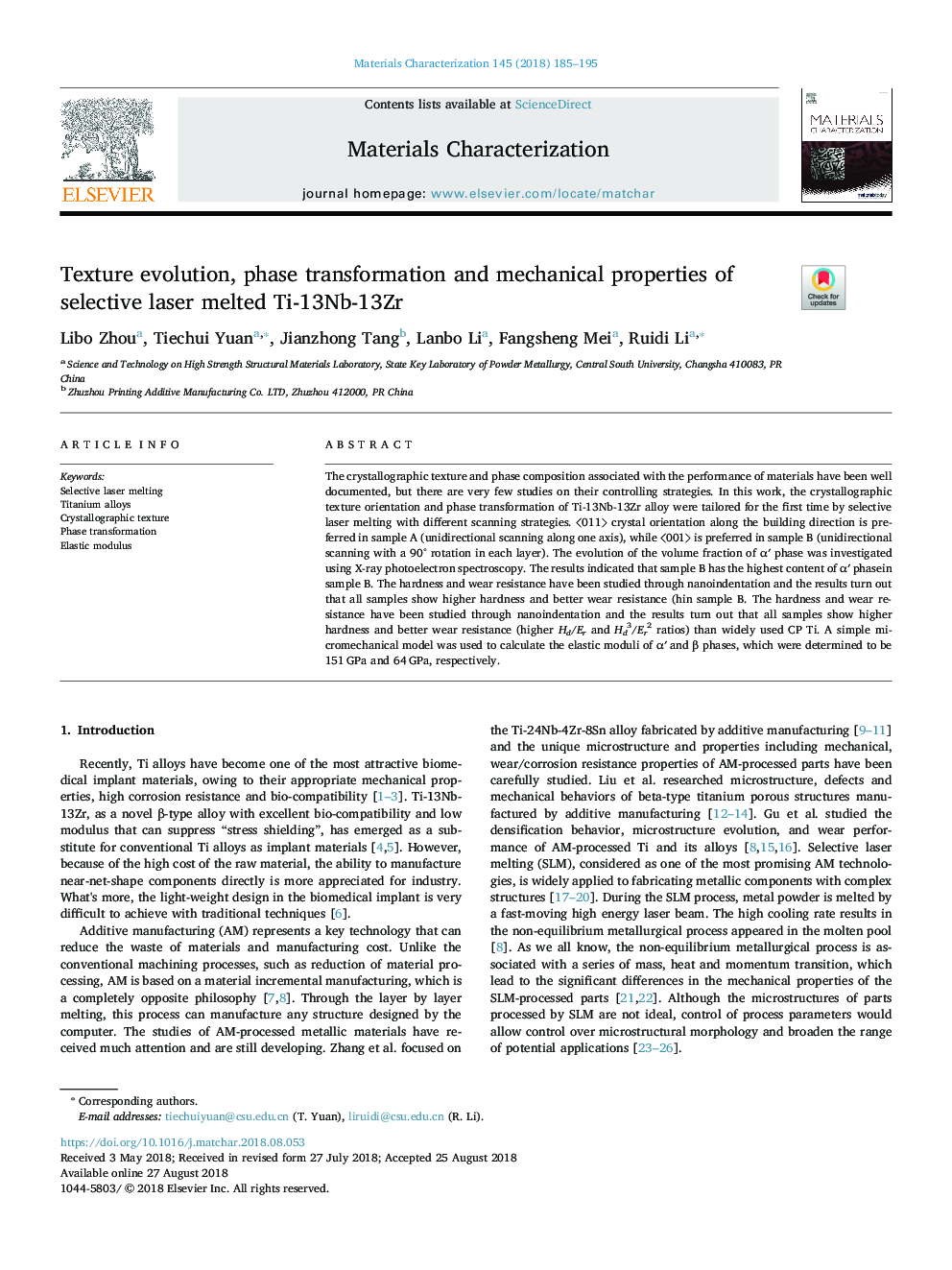| Article ID | Journal | Published Year | Pages | File Type |
|---|---|---|---|---|
| 10128584 | Materials Characterization | 2018 | 11 Pages |
Abstract
The crystallographic texture and phase composition associated with the performance of materials have been well documented, but there are very few studies on their controlling strategies. In this work, the crystallographic texture orientation and phase transformation of Ti-13Nb-13Zr alloy were tailored for the first time by selective laser melting with different scanning strategies. ã011ã crystal orientation along the building direction is preferred in sample A (unidirectional scanning along one axis), while ã001ã is preferred in sample B (unidirectional scanning with a 90° rotation in each layer). The evolution of the volume fraction of αⲠphase was investigated using X-ray photoelectron spectroscopy. The results indicated that sample B has the highest content of αⲠphasein sample B. The hardness and wear resistance have been studied through nanoindentation and the results turn out that all samples show higher hardness and better wear resistance (hin sample B. The hardness and wear resistance have been studied through nanoindentation and the results turn out that all samples show higher hardness and better wear resistance (higher Hd/Er and Hd3/Er2 ratios) than widely used CP Ti. A simple micromechanical model was used to calculate the elastic moduli of αⲠand β phases, which were determined to be 151â¯GPa and 64â¯GPa, respectively.
Keywords
Related Topics
Physical Sciences and Engineering
Materials Science
Materials Science (General)
Authors
Libo Zhou, Tiechui Yuan, Jianzhong Tang, Lanbo Li, Fangsheng Mei, Ruidi Li,
